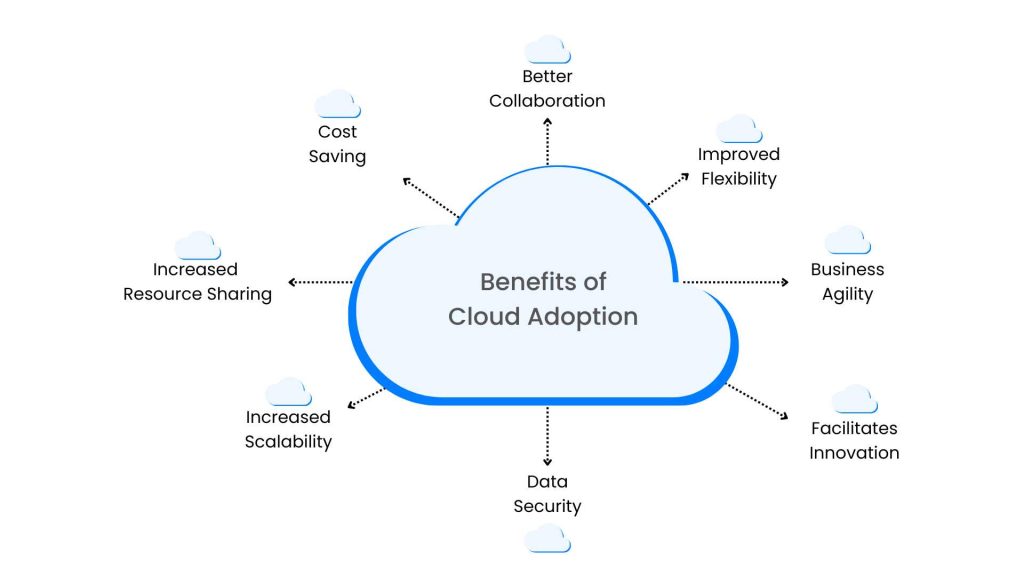In today’s business environment, SMBs must leverage every tool available to stay competitive. Cloud services have emerged as a game changer, significantly improving operations, cutting costs, and boosting productivity.
This transformation allows SMBs to operate with the same efficiency and security as large enterprises, providing a competitive edge that was previously out of reach. But how can SMBs get started with cloud adoption? Let’s dive into the steps to make this transition smooth and effective.
Getting Started with Cloud Adoption
Evaluate Cloud Service Providers
The first step in cloud adoption is to evaluate potential cloud service providers. Not all providers are created equal, and it’s crucial to find one that meets your business’s unique needs. Consider factors such as:
- Reliability and Uptime: Research the provider’s track record for uptime and reliability. Downtime can be costly for any business.
- Security: Ensure the provider has robust security measures in place, including data encryption, compliance with industry standards, and comprehensive security policies.
- Service Offerings: Look for a provider that offers the precise assistance you require, whether it’s PaaS(Platform as a Service), Infrastructure as a Service (IaaS), or Software as a Service (SaaS).
- Support and Customer Service: Choose a provider that provides top-notch customer services and resources to assist you during the transition and beyond.
Create a Clear Migration Strategy
Once you’ve chosen a provider, the next step is to create a migration strategy. This strategy should be detailed and include the following:
- Assessment of Current Infrastructure: Understand what you currently have in place and what needs to be moved to the cloud.
- Goals and Objectives: Clarify your goals for cloud adoption, whether they involve cost reduction, enhanced performance, or increased security.
- Timeline and Milestones: Establish a realistic timeline with clear milestones to track progress.
- Risk Management: Recognize possible risks and create strategies to mitigate them.
- Resource Allocation: Determine the resources (both human and financial) needed for the migration.
Gain Employee Buy-In Through Training
For cloud adoption to be successful, it’s essential to have your employees on board. This can be achieved through:
- Training Programs: Provide comprehensive training to ensure employees understand how to use the new cloud services effectively.
- Communication: Clearly communicate the benefits of the cloud to your employees, emphasizing how it will make their jobs easier and more efficient.
- Support: Provide constant support and resources to assist employees with adapting to the new systems.

Your Business Is Safer in the Cloud
1. Data Security Management
Cloud service providers invest heavily in security, often surpassing the capabilities of most SMBs. They offer:
- Access Controls: Robust access controls ensure that certified personnel can access sensitive data only.
- Regular Audits: Regular security audits to identify and fix vulnerabilities.
2. Higher Standards & Data Encryption
Cloud providers adhere to higher security standards and implement robust data encryption methods to protect data both in transit and at rest. This ensures that your data is secure from unauthorized access and breaches.
3. Physical & Technical Monitoring
Cloud providers have dedicated teams and advanced technologies for constant monitoring. They utilize:
- Physical Security: Data centers have physical security measures, including surveillance, biometric access, and security personnel.
- Technical Monitoring: Continuous monitoring for suspicious activities, coupled with advanced threat detection systems.
4. Vulnerability & Patch Management
Ensuring software security by regularly updating with the latest patches is crucial, and cloud providers handle this process for you:
- Timely Updates: Immediate application of patches and updates to protect against vulnerabilities.
- Proactive Management: Proactive identification and resolution of potential security threats.
Benefits of Adopting Cloud Solutions
Scalability
Cloud solutions can be scalable, allowing for easy resource adjustment based on demand and preventing unnecessary expenses. SMBs experiencing growth or seasonal fluctuations benefit the most from this flexibility.
Cost Savings
Cloud adoption can lead to substantial cost savings. By moving to the cloud, SMBs can eliminate the need for very expensive on-premises hardware and infrastructure.
Improved Flexibility
Cloud services provide improved flexibility, enabling employees to work from anywhere. It also allows seamless collaboration to critical business applications regardless of location.
Data Security
cloud computing offers cutting-edge security measures to protect your data. With key features like data encryption, access controls, and regular security audits, business information is more secure in the cloud than in most on-premises setups.
Conclusion
Acumatica’s cloud business management software, empowers SMBs by offering a comprehensive, real-time view of their operations—anytime, anywhere. By leveraging Acumatica’s robust cloud solutions, small businesses can enhance their productivity, improve efficiency, and secure their data. Embrace the power of the cloud with Acumatica and take your business to new heights.

Vijay comes with a vast experience in ERP and enterprise solutions space with about 20 years of experience in various packaged application like Acumatica, SAP, Orion, Salesforce.com, SugarCRM and, SalesLogix.

